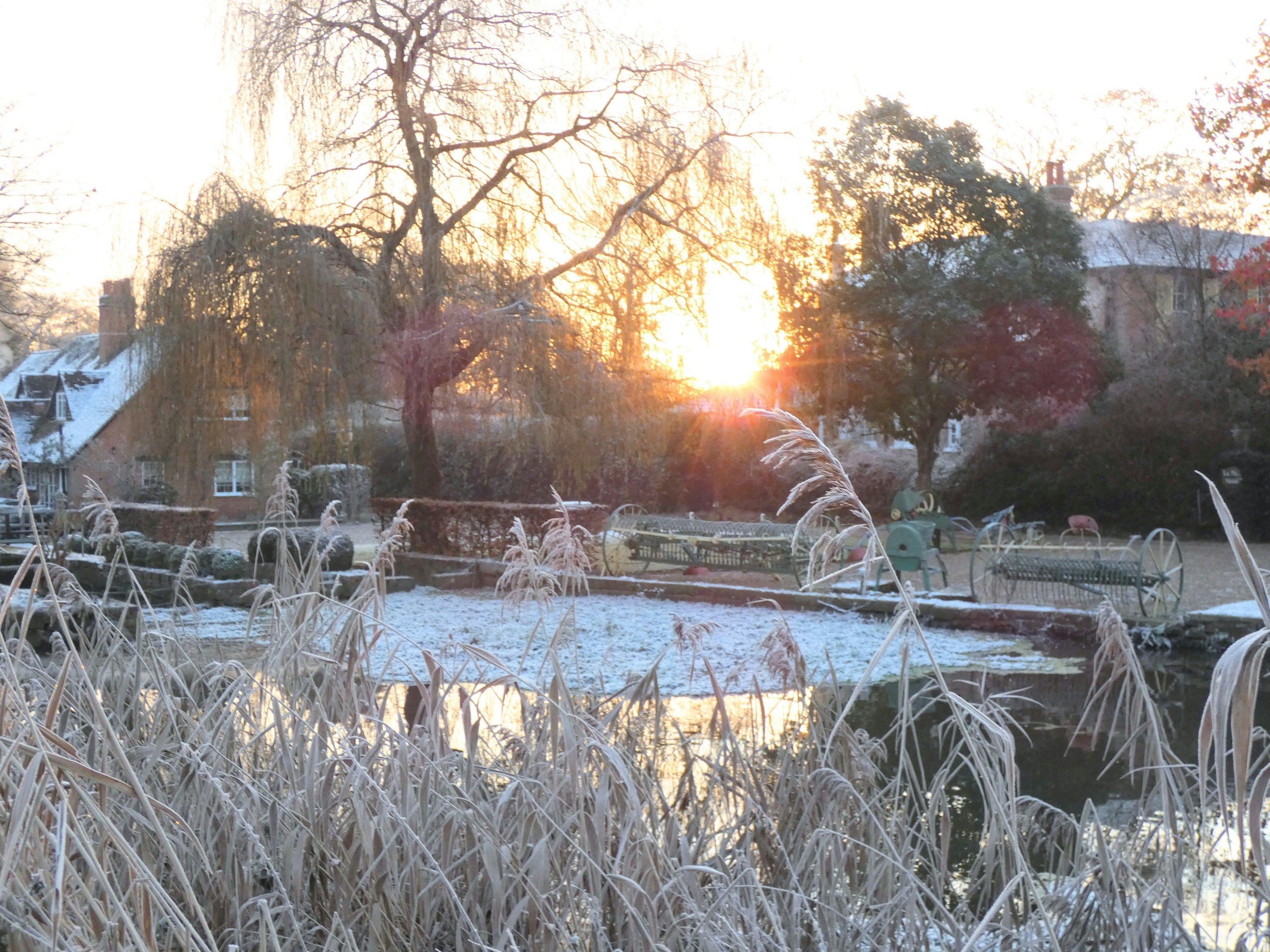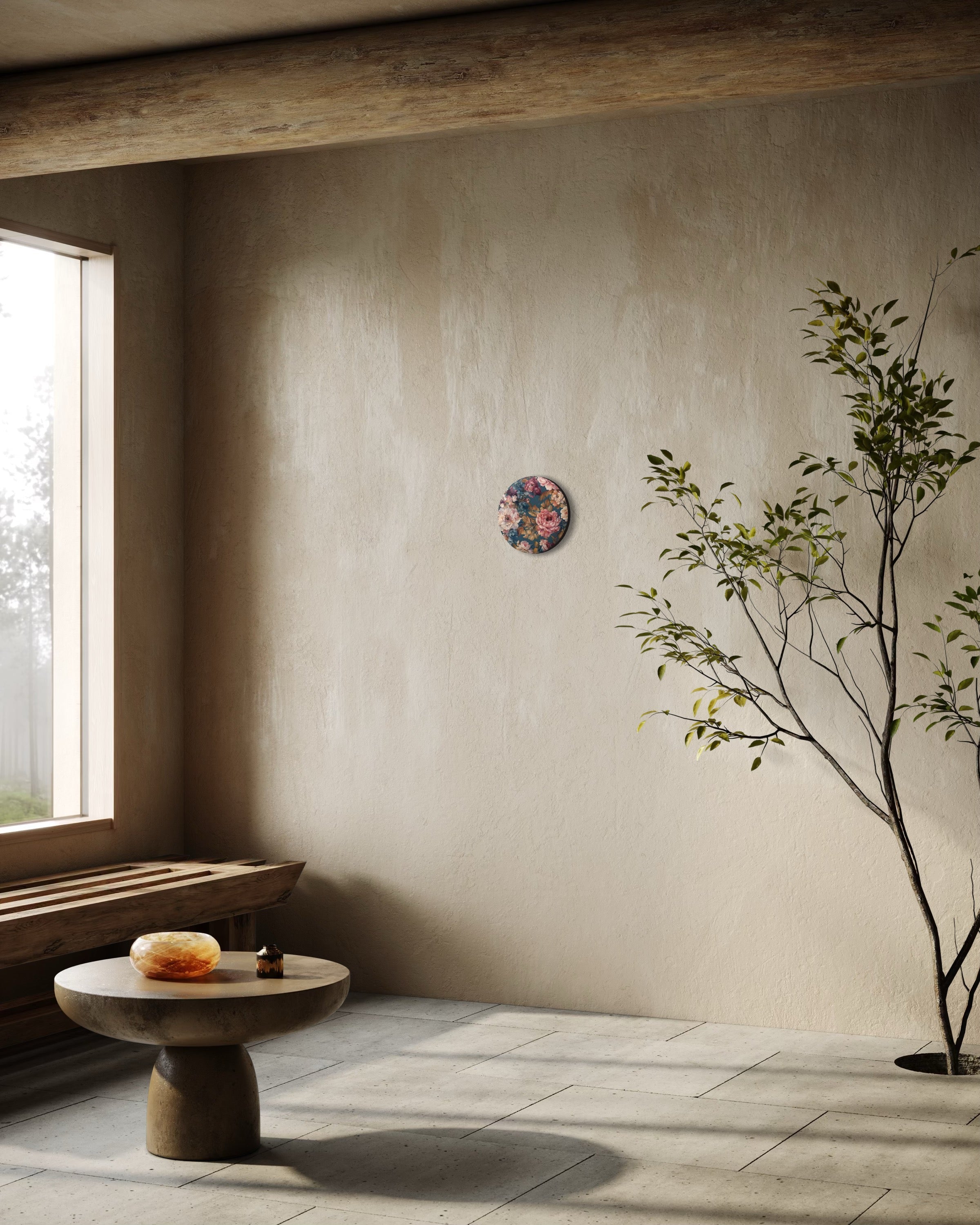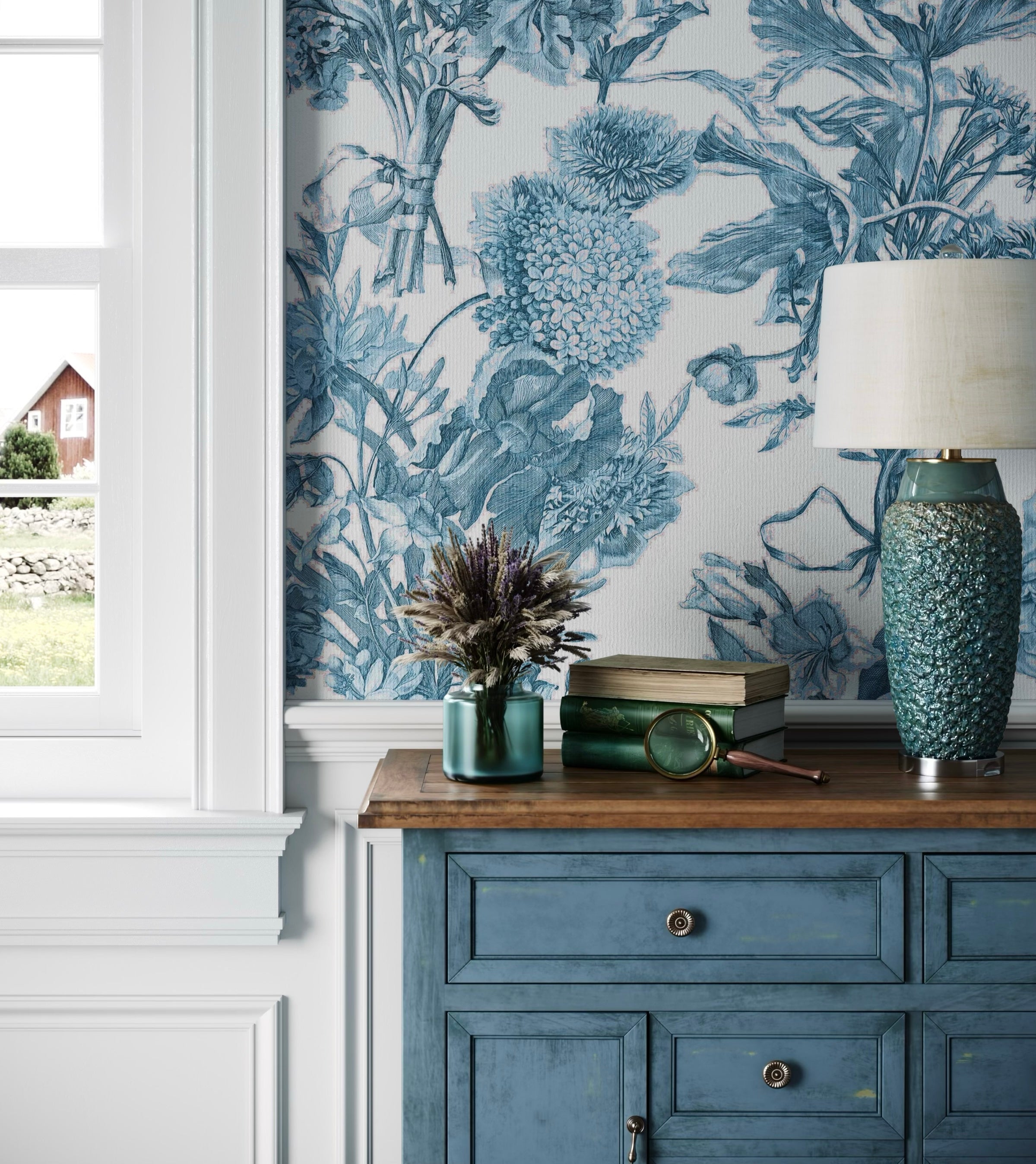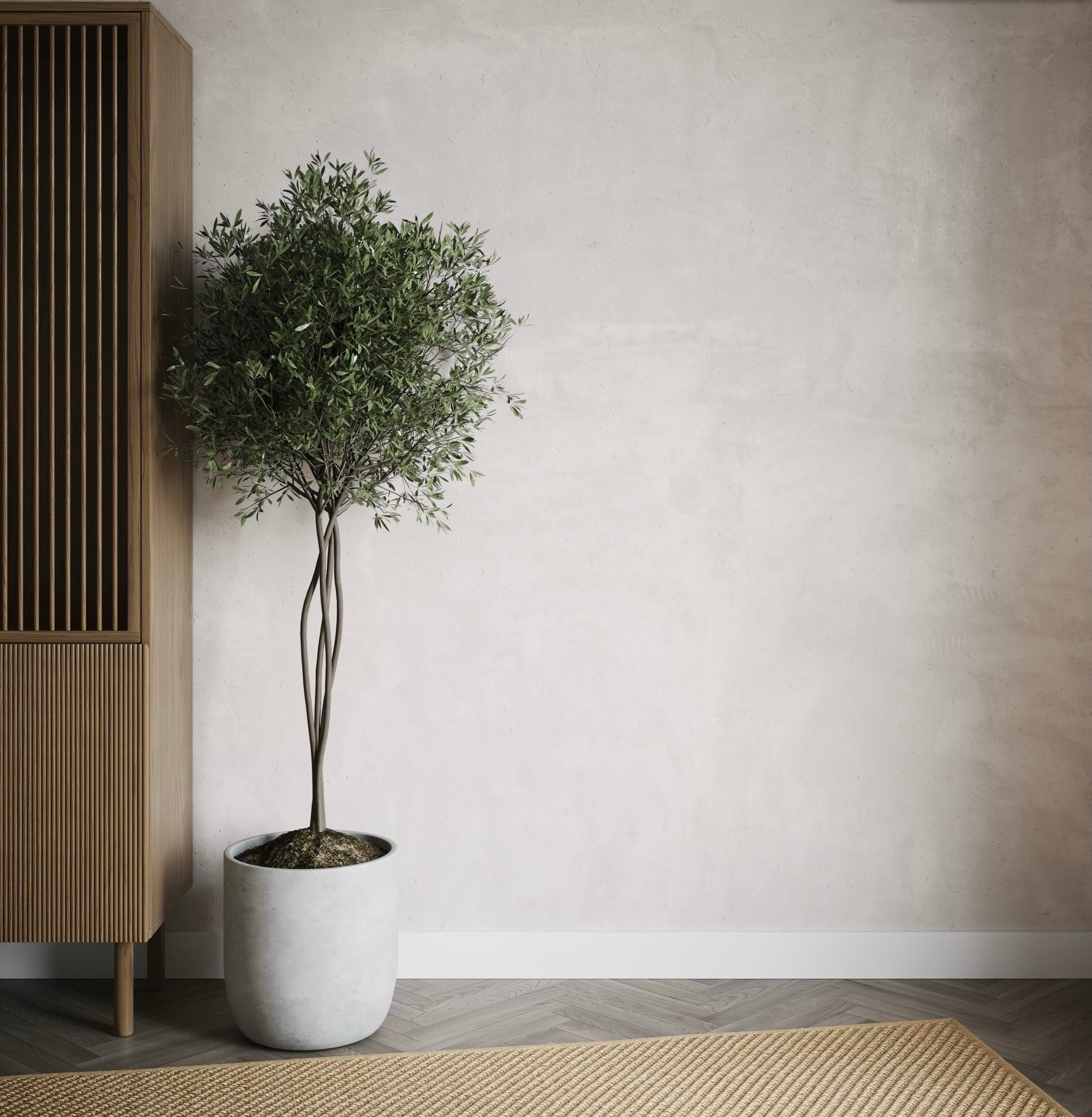
Autumn & Winter Botanicals: Native British Plants for Colder Months
What October Teaches
The light changed sometime last week. She cannot say precisely when but she feels it in her body, in the way morning arrives later each day, in the particular slant of afternoon sun that now comes through the kitchen window at an angle it did not manage in August.
October light is different. Lower. More golden but also somehow weaker, as though the sun itself is tired. It catches things summer light missed. The skeletal structure of the climbing rose against the shed. The way raindrops sit on ivy leaves, perfectly spherical, refracting. The silver undersides of willow leaves turning in wind that feels colder now, sharper, carrying the promise of frost though it has not arrived yet.
She moved to this cottage three years ago, city-tired and uncertain what she wanted except space and quiet. The garden came with the house. Half an acre of neglect, previous owners having moved to Spain and rented the property to tenants who did nothing beyond mowing sporadically. The bones were good. An old yew hedge along the western boundary, gnarled and untrimmed but alive. Ancient roses that had reverted to species, their simple five-petalled blooms more beautiful than any hybrid. Self-seeded foxgloves in the shade under ash trees. Nettles everywhere, which she learned meant rich soil.
The first year she did what new gardeners do. Bought annuals from the garden centre. Planted them in tidy rows. Deadheaded obsessively. Watered through July's heat. Everything looked cheerful and bright until October, when it all died and left bare earth.
The second year she tried perennials. Hardy geraniums, salvias, things the books promised would return. They did return, and the garden looked better, fuller. But still, come November, everything collapsed into brown tangles that she dutifully cut back and added to the compost heap. Winter revealed a garden that looked asleep at best, abandoned at worst.
This is the third year. She has been watching differently. Paying attention not to what flowers when but to what persists. What holds its form when cold comes. What feeds the robin that appears each morning, territorial and watchful. What shelters the wren whose high, bright call she has learned to recognise even before seeing the tiny brown body darting through undergrowth.
She has been learning that some plants belong here in ways others never will. That this particular patch of Somerset clay and rainfall has its preferences, its patterns, its own logic that she can either fight or accommodate. Fighting is exhausting. Accommodation is revealing itself as something else. Partnership, perhaps. Attention.
The yew hedge teaches patience. It grows perhaps ten centimetres per year if well-fed, less if not. Yet it has been here longer than the cottage, longer than anyone can remember. The village church has yew trees estimated at 800 years. Possibly older. The wood is nearly indestructible, the needles remain green through every winter, the tree itself becomes denser, more present, more itself with each passing decade.
She has stopped trimming the hedge into rigid flatness. Instead, she allows it to develop its natural irregular crown whilst keeping the sides reasonably vertical. The result is less formal but more alive, more responsive to wind and weather, more obviously a living thing rather than green architecture.
This is what October teaches. That some beauty requires time. That patience is not passivity but active attention to what is already present, already trying to express itself through root and branch and persistent leaf.
The Ones Who Stay
The holly by the back door is older than the cottage. She knows this because a neighbour mentioned it, said his grandfather remembered that tree, said it was massive even then. The trunk is perhaps forty centimetres across, the bark silvered with lichen, the whole structure leaning slightly southward as though reaching for whatever sun winter offers.
It does not produce many berries every year. This year, though, the branches are heavy with them. Clusters of red so bright they look artificial against the glossy dark leaves. The blackbirds watch these berries with evident interest but do not touch them yet. Too bitter, apparently, until frost has sweetened them through repeated freezing and thawing. The birds know this. They wait.
Holly is native here. It arrived after the last ice age, carried by birds across the land bridge that once connected Britain to continental Europe before sea levels rose and made these islands. It evolved for exactly this climate. Mild, wet winters. Occasional hard frosts but rarely prolonged freezing. Atlantic gales that would shred less sturdy foliage.
The leaves are remarkable. Lower branches produce leaves with vicious spines, defence against browsing deer and livestock. Higher branches, beyond reach of herbivores, develop leaves with smooth edges. Same plant, different strategies depending on vulnerability. This economy of form speaks to millennia of adaptation, of survival through flexibility.
Folk tradition held complicated views about holly. It was protective, certainly. Planted near houses, it kept lightning away. Brought indoors at winter solstice, it ensured good fortune through the darkest months. But it was also dangerous. Cutting down holly invited misfortune. The tree was inhabited, possessed presence that demanded respect.
In some regions, holly was explicitly male whilst ivy was female, and both were required for household protection. Whichever was brought indoors first at Christmas determined whether husband or wife would rule the household that year. This gendering seems quaint now, but the underlying recognition that different plants possess different qualities, different presences, remains valid.
She has learned not to prune the holly. It shapes itself better than she could. She simply removes any dead wood, any branches crossing badly, and otherwise allows it to be what it is. A presence. A marker of seasons. A provider of shelter and eventual food for creatures whose lives intersect with hers in this shared half-acre.
The yew hedge serves similar function. It is backdrop, structure, windbreak. But it is also inhabited. Wrens nest in its dense interior, safe from predators. Thrushes shelter there during storms. On sunny winter days, she has seen butterflies, peacocks and red admirals, basking on the south-facing side, wings spread to catch whatever warmth is available.
She has planted box to create lower structure. Buxus sempervirens, native to southern England though increasingly rare in wild populations. Box has a smell when warmed by sun, slightly feral, almost cat-like. Some people hate it. She finds it oddly comforting, evidence that the garden is inhabited by more than visible life, that the air itself carries information about what grows here.
Box is under threat now. Box blight, fungal diseases that cause defoliation and die-back, have devastated formal gardens across Britain. Her box shows early signs. Yellowing leaves, some defoliation. She treats it with care, removing infected material, improving air circulation, accepting that it may not survive. If it dies, she will plant yew instead. Slower growing but nearly immortal.
This is October's second lesson. That some things persist not through invulnerability but through deep adaptation to place. The natives are not stronger necessarily but better suited. They have had 10,000 years to learn this soil, this weather, these particular angles of light.
What Blooms in Cold
The witch hazel surprised her. She planted it two years ago in a shaded corner near the compost bins, not expecting much. It was expensive, this small shrub, and she questioned the purchase. But the nursery owner had been insistent. You want winter interest? This is what you need. Trust me.
January arrived cold and grey. She had stopped going into the garden much, restricting herself to brief sorties for kindling or to empty kitchen scraps onto the compost. Then one morning, passing the witch hazel on her way to the woodshed, she caught a scent. Sweet but somehow spicy, like honey mixed with citrus, carried on cold air.
The shrub was blooming. Tiny flowers, their petals like torn ribbons, bright yellow against bare branches. They looked impossibly delicate yet there they were, opening in temperatures that kept her indoors wearing two jumpers. The fragrance was stronger on milder days, fainter when frost returned, but always present. A signal that life continues, that growth is possible even now.
Witch hazel is not native. It comes from China, introduced by Victorian plant hunters who scoured Asia for species that might enhance British gardens. Robert Fortune brought this one back in 1879, along with hundreds of other plants that transformed British horticulture. The ethics of that extraction are complicated. Wealth and empire enabled those expeditions. Indigenous knowledge was often appropriated without credit. Yet the plants themselves, once here, simply grew. They found niches. They fed bees. They offered beauty when little else could.
She has made peace with introducing non-natives if they serve the garden's ecology. The witch hazel feeds early bees. Its autumn foliage turns brilliant yellow before dropping. It asks little beyond acidic soil and protection from harsh sun. It has earned its place.
The same logic applies to mahonia, another non-native that blooms through winter. Oregon grape, Mahonia aquifolium, arrived in 1823 from western North America and naturalised so successfully that many assume it native. Its yellow flowers appear January through March, providing crucial nectar for queen bumblebees emerging from hibernation. The berries that follow feed thrushes. The glossy evergreen leaves, which turn burgundy in cold weather, provide structure year-round.
She has several mahonia now, planted in difficult shaded areas beneath trees where little else thrives. They have spread slowly through underground runners, creating evergreen ground cover that asks nothing of her beyond occasional removal of old stems. The winter bloom is a gift. Bright yellow against dark foliage, against grey skies, against the general dormancy of everything else.
Winter honeysuckle, Lonicera fragrantissima, completes the winter-blooming trio. Its flowers are small, easily missed visually, but their scent is powerful. Honey-sweet with lemon undertones, it carries on cold air like a secret. She planted one near the back door specifically so she would encounter that fragrance when taking out rubbish or collecting firewood. Small rituals made bearable by unexpected sweetness.
These winter bloomers do something important. They mark time differently than summer's abundance. In June, everything flowers at once, competing for attention. In January, a single flowering shrub becomes event. You notice it. You visit it. You stand in cold air breathing its scent and feeling grateful that something is willing to perform this small miracle.

The Beauty of Decay
The teasels were accidents. She did not plant them. They appeared two summers ago in gaps between paving stones, along the fence line, in bare patches of the vegetable beds she had not yet filled. Common teasel, Dipsacus fullonum, native and opportunistic.
She left them, curious. The first year they formed low rosettes of spiny leaves. The second year they sent up tall stems, two metres high, topped with egg-shaped flower heads that bloomed purple-pink through July and August. Bees loved them. She would stand watching, counting different species, learning to distinguish honeybees from various bumblebees from the smaller solitary bees whose names she did not know yet but whose presence felt important.
After flowering, the conventional gardening wisdom suggested cutting them back. Tidying. Making space. She did not. The flower heads dried to pale gold, their spiky bracts creating geometric perfection that caught frost, collected rainwater, held morning mist in visible droplets.
The goldfinches arrived. She had not seen goldfinches in the garden before. Suddenly there were six of them, then eight, perched on teasel stems that swayed under their weight, extracting seeds with their fine beaks whilst their red faces and gold wing bars flashed brilliantly against grey winter sky.
She understood then that she had been thinking about gardens wrong. Or not wrong but incompletely. The garden was not for her alone. It was habitat. Ecosystem. The teasels, standing dead through winter, were performing essential function. Feeding birds. Providing structure that held space when everything else collapsed. Creating beauty of a different kind, architectural rather than floral, about form and texture and light rather than colour.
She let more teasels stand. Then she noticed sea holly, Eryngium maritimum, another native that grew along the coast but which someone had obviously planted here before her tenancy. Its steely blue-grey flowers, surrounded by spiny bracts, held their colour and form through autumn into winter, gradually fading to pale straw but maintaining architectural presence.
Dogwood revealed itself differently. Common dogwood, Cornus sanguinea, grew in a thicket along the northern hedge, thoroughly unremarkable through summer. Then October arrived and the leaves turned deep burgundy before dropping to reveal stems painted brilliant red. She had walked past this thicket for two years without noticing it. Now it was the most vivid thing in the entire garden, glowing when backlit by low sun, reading as warmth against cold.
She learned that this red intensifies on young growth, that coppicing the dogwood every few years would sacrifice berries but create thickets of brilliantly coloured stems. She tried this, cutting half the thicket to ground level one February. The following winter, those stems glowed more intensely than the unpruned sections. The thrushes still had berries from the unpruned half. Everything benefited.
This is October's third lesson. That decay and persistence are not opposites but partners. That beauty exists across the entire life cycle if you learn to see it. That gardens are not static pictures but processes, and honouring those processes means allowing death its place alongside growth.
Living Sculpture
She keeps containers near the back door. Large terracotta pots that gain character as they weather, developing white salt deposits and green algae that she no longer scrubs away. These hold winter plantings, brought closer to the house where she encounters them daily.
Heather, Calluna vulgaris, fills three of the containers. Native to Britain's moorlands, it flowers late summer through autumn, then holds its structure through winter, the dried flowers creating textured mass in shades of rust and brown. She chose cultivars with coloured foliage as well as bloom: bronze, gold, silver-grey. Together they create tapestry that changes with light and weather, never dull even when not flowering.
Ivy, Hedera helix, trails from other containers, its evergreen presence softening hard edges whilst its late autumn flowers, small and greenish-white, feed the last bees and hoverflies before winter truly arrives. In spring, before anything else moves, ivy provides first cover for nesting blackbirds. The same plant, serving different functions across seasons, asking only for container and occasional water.
She has learned to appreciate ivy despite its reputation as garden thug. In containers, its spread is controlled. Its glossy leaves catch light beautifully. Birds shelter in its dense growth. And the folklore around ivy is rich, complicated, revealing how people have always recognised its particular qualities.
Ivy was female to holly's male in traditional belief. Bringing both indoors at winter solstice ensured balance, protection, harmony between complementary forces. Ivy growing on houses was protective but also potentially dangerous. If it thrived, protection continued. If it suddenly died, death would visit the household. This belief ensured attentive care whilst providing explanation for correlation between dying ivy and sick inhabitants, correlation that likely reflected poor air quality or damp rather than supernatural forces but which the superstition successfully addressed.
She does not bring ivy indoors. But she values it in the garden, values its evergreen persistence, its tolerance of shade and poor soil, its willingness to clothe ugly structures in living green. Some of the containers near the door combine heather and ivy, the upright form of heather contrasted with ivy's trailing habit, creating compositions that remain visually interesting through the darkest months.
This is what containers allow. Bringing the garden closer. Making observation easier. In deep winter, when she does not want to walk across frost-hardened ground to see what the robin is doing, she can stand at the door with morning tea and observe heather's bronze foliage catching low sun, watch wren investigate ivy's dense growth for insects, notice how yesterday's rain has frozen in droplets on every surface.
The containers become mediators between inside and outside, between cultivated warmth and seasonal cold, between the sanctuary of the house and the wilder patterns of the garden beyond.

What Winter Holds
She stands at the kitchen window. December afternoon, light already fading though it is barely three o'clock. The garden holds its breath in cold, everything still, frost silvering every surface.
The yew hedge is black-green against pale sky. The holly's berries glow like embers. Teasel seed heads catch the last horizontal light, becoming momentarily golden before shadow claims them. Dogwood stems are lines of red against grey, vertical punctuation marking the northern boundary.
Nothing is blooming now except the witch hazel, its yellow flowers absurd and precious in the general dormancy. Nothing is particularly colourful. Yet the garden is not empty. It is simply quiet, holding itself in a different way than summer's abundance allowed.
She has learned to value this quietness. To see that winter gardens are not failed summer gardens but different entities entirely, governed by different aesthetics, different purposes. Structure matters now more than flower colour. Form matters more than lushness. The interaction between plant and light, between organic shapes and geometric frost patterns, between persistent life and apparent death becomes the garden's primary language.
The robin lands on a fence post, fluffs its feathers against cold, watches her through the glass. She has fed this robin through two winters now. It knows her, tolerates her presence in the garden, sometimes follows when she digs compost into beds because digging exposes worms. This morning it was singing, that bright thread of sound that carries in cold air, announcing territory, announcing persistence, announcing that life continues even now.
The wren is harder to spot but she knows where it nests, in the yew hedge's deep interior where predators cannot reach. She has seen it only briefly, a tiny brown streak low to the ground, but she hears it often, that disproportionately loud call from such a small body.
The garden feeds them both, and others she rarely sees. Mice living in the stone wall. The hedgehog that appeared briefly in September before hibernating somewhere she has not found. Slow worms under the compost heap. Frogs in the pond that formed last winter in a hollow near the ash trees, just rainwater collecting in clay, but enough. Everything is enough if you allow it to be.
This is October's final lesson, though it takes all winter to fully understand. That sanctuary is not escape from season but immersion in it. That beauty exists in cold and darkness as much as in warmth and light, though you must learn different ways of seeing to recognise it. That the garden's purpose is not to serve your aesthetic preferences but to hold space for the complex web of relationships that constitute life in this particular place.
She has been learning humility. To accommodate rather than dominate. To observe rather than constantly intervene. To trust that plants know what they are doing, that they evolved for this, that her role is not director but participant, one creature among many sharing this half-acre of Somerset clay and rainfall and persistent green.
The light fails completely now. She turns from the window to light the lamp, to begin preparations for evening. But she will return tomorrow morning, and the next, to see what the frost has done, how the light catches differently at different hours, whether the robin will sing, whether the berries have finally tempted the blackbirds, whether anything has changed or whether everything remains held in winter's patient grasp.
The garden waits. It does not demand. It simply persists, holding space, holding time, holding the possibility that spring will eventually arrive but that meanwhile, December has its own gifts if you learn to see them.
Native Plants for Winter Gardens: Practical Guidance
For those wishing to create winter-interest gardens using native British species, the following plants offer reliable structure, seasonal beauty, and ecological function:
Evergreen Structure:
- Yew (Taxus baccata): Slow-growing conifer with dense, dark foliage; tolerates shade and heavy pruning; toxic except for red arils
- Holly (Ilex aquifolium): Requires male and female plants for berries; glossy leaves, red fruit in winter; tolerates shade
- Box (Buxus sempervirens): Fine-textured evergreen for hedging or topiary; vulnerable to box blight; requires good air circulation
- Ivy (Hedera helix): Climbing or ground cover evergreen; late autumn flowers feed insects; provides nesting sites
Winter Interest from Form:
- Teasel (Dipsacus fullonum): Biennial with architectural seed heads; feeds goldfinches; self-seeds readily
- Sea Holly (Eryngium maritimum): Coastal native with steely blue flowers and spiny structure; requires excellent drainage
- Dogwood (Cornus sanguinea): Deciduous but with brilliant red winter stems; coppice biennially for best colour; tolerates wet soil
Winter-Blooming (Naturalised Non-Natives):
- Witch Hazel (Hamamelis mollis): Fragrant yellow flowers January-March on bare branches; slow-growing; prefers acidic soil
- Mahonia (Mahonia aquifolium): Evergreen with yellow winter flowers; feeds early bees; tolerates shade and poor soil
- Winter Honeysuckle (Lonicera fragrantissima): Semi-evergreen with intensely fragrant white flowers; plant near paths or doors
For Containers:
- Heather (Calluna vulgaris): Moorland native with late summer bloom that persists as dried flowers; requires acidic soil
- Rosemary (Rosmarinus officinalis): Mediterranean herb naturalised in Britain; evergreen with winter interest; good drainage essential
These species represent starting points rather than comprehensive lists. Local conditions, soil type, exposure, and existing garden ecology will determine what thrives in your particular space. Observation across multiple seasons reveals what belongs, what struggles, what deserves expansion or removal.

Enrich Lives
The garden teaches, if you let it. October through March ask different questions than May through September. They demand different attention, different patience, different ways of seeing beauty. They reveal which plants belong and which merely occupy space. They show the garden's bones.
To cultivate native plants adapted to these islands' particular climate and seasons is to participate in relationships older than human memory. To allow teasel to stand through winter feeding goldfinches is to make space for more than your own aesthetic preferences. To value the architectural form of frost-covered seed heads alongside summer's bright flowers is to recognise that beauty exists across entire life cycles, not merely at bloom peak.
This is sanctuary not as escape from season but as alignment with it. Your garden in winter becomes teacher, offering lessons in persistence, in the eloquence of bare branches, in the way cold light transforms everything it touches. And you, watching from the window whilst frost patterns the glass, become part of that ancient relationship between human dwelling and seasonal landscape, between the shelter we create and the wild patterns that shape it.
The garden waits. It holds space. It holds time. It holds beauty through the darkest months. And in that patient holding, it offers everything: structure, meaning, connection to place, reminder that spring will come but that meanwhile, winter has its own gifts, its own quiet splendour, if only you learn to see.
Further Study
Foundational Texts:
- Robinson, William. The Wild Garden. 1870. [The foundational argument for naturalistic planting with hardy species]
- Rackham, Oliver. The History of the Countryside. Phoenix Press, 2000. [Essential reading on how human activity shaped British landscapes]
- Stace, Clive. New Flora of the British Isles, 4th edition. C&M Floristics, 2019. [Definitive botanical reference]
Organisations:
- Plantlife (plantlife.org.uk): Native plant conservation and garden guidance
- The Wildlife Trusts (wildlifetrusts.org): County-specific advice on habitat creation
- Royal Horticultural Society (rhs.org.uk): Cultivation guidance with scientific backing
Specialist Nurseries:
- British Wild Flower Plants (wildflowers.co.uk)
- Habitat Aid (habitataid.co.uk)
- Celtic Wild Flowers (celticwildflowers.co.uk)
Photography: Hero image by Chris Ross-Lewin via Unsplash. Witch hazel by Zoshua Colah via Unsplash. Pollinator on teasel by Julian Frauenholz via Vecteezy. Interior botanical by Michael Kater via Unsplash.
This article represents part of Sisuverse's ongoing exploration of how thoughtfully chosen botanical companions enrich daily living through seasonal beauty, ecological function, and deep connection to place. Explore our curated selection of architectural plants, living botanicals, and objects that honour craft to create your own sanctuary through the turning year.




